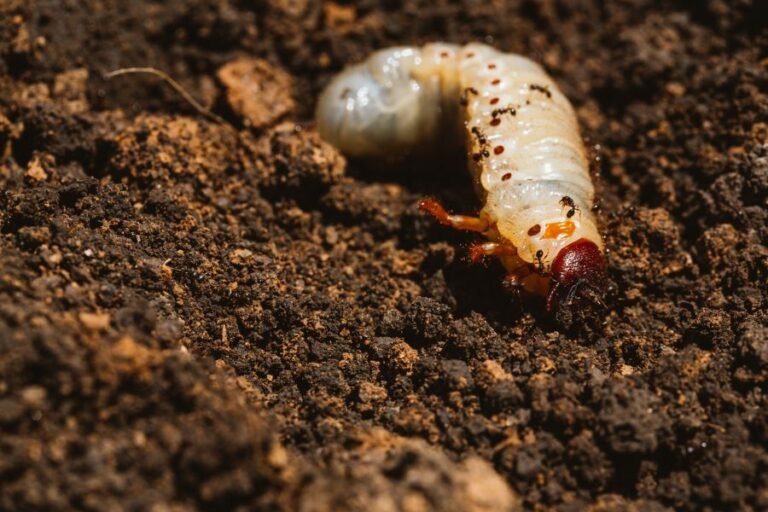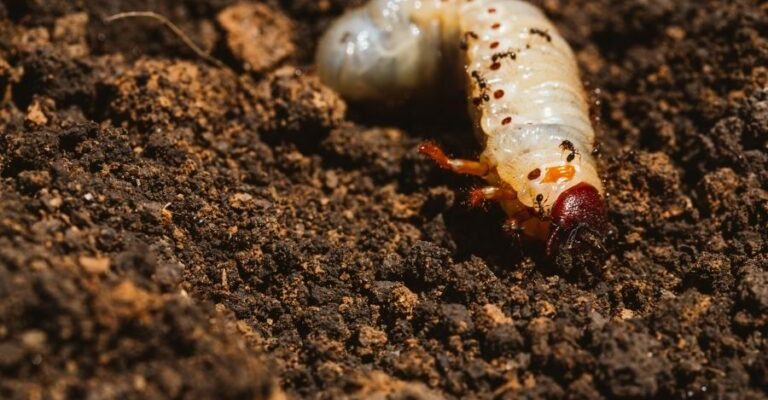
Let’s break it down. Grub worms, which are the larvae of various beetles, thrive in moist environments. Just like a kid bouncing on a trampoline after a rain, the dampness creates a perfect condition for them to flourish. But what does that really mean for your garden or lawn? In this article, we’ll dive into the relationship between heavy rains and grub worms, exploring why you might see more of them after a storm and what you can do about it.
What Are Grub Worms?
Grub worms, often referred to simply as “grubs,” are the larvae of several types of beetles, including Japanese beetles and European chafers. They’re usually white, C-shaped, and live underground. These little guys have a voracious appetite and primarily feed on the roots of grass and other plants. Imagine them as the hidden munchers in your garden, quietly working their way through your precious plants while you’re none the wiser.
You might be wondering, why should I care about these critters? Well, if left unchecked, grub worms can wreak havoc on your lawn, leading to brown patches and even dead grass. The damage they cause often becomes apparent in late summer or early fall when the grass begins to dry up. Knowing what you’re dealing with is the first step in keeping your garden healthy.
How Heavy Rainfall Affects Grub Worm Populations
You might think, “Can a little rain really make a difference?” Here’s the thing: heavy rainfall can create an ideal environment for grub worms. The moisture in the soil helps them thrive and, in many cases, prompts adults to lay more eggs. Think of it as a buffet opening up for them, where every drop of rain is one more reason to celebrate.
When the ground is saturated, grubs can move easily through the soil. They’re not just hanging out there; they’re actively feeding and growing. This is especially true in areas where heavy rains have created puddles, which often means more larvae can survive and grow into adults. As those adults emerge, they’ll start the cycle all over again—laying eggs that will become the next generation of grubs.
Signs of Grub Worm Infestation
So, how can you tell if grubs are causing problems in your yard? Look out for a few key signs:
- Brown patches: One of the most obvious signs of grub damage is irregular brown patches in your lawn. These areas may feel soft and easy to pull up, almost like a carpet that’s coming loose.
- Bird activity: If you notice more birds pecking around in your yard, they could be after those tasty grubs. Birds love to snack on them, so an uptick in bird visitors might indicate a grub problem.
- Dead grass: If the grass is dying and you notice clusters of grubs when you dig a little, that’s a clear sign they’re at work.
Paying attention to these signs will help you catch a grub problem early. Once you know what you’re up against, you’ll be better equipped to tackle it.
Why Grub Worms Thrive After Heavy Rains
Honestly, environmental conditions speak volumes about the presence of grub worms. Heavy rains not only make the ground softer but also help create a more hospitable environment for their lifecycle. More moisture means the soil is softer, which makes it easier for the grubs to grow and dig around.
Additionally, when it rains heavily, it reduces the effectiveness of insecticides in the soil. Many treatments need a dry surface to work effectively, but after heavy rains, those treatments can become washed away. This means the grubs can munch away at your roots without much resistance from pest control measures.
It’s like giving them a free pass to snack all they want! This cycle can lead to a sudden increase in their population after significant rainfall, so being proactive about prevention or treatment is key.
Preventing Grub Worm Infestations
So, what can you do to keep grub worms at bay? Here are some effective strategies:
- Healthy lawn care: Keeping your grass healthy is one of the best defenses. Watering appropriately, fertilizing, and regular mowing help build a strong lawn that can withstand grub damage.
- Use beneficial nematodes: These microscopic worms are natural predators of grubs. When introduced to your soil, they can help keep grub populations in check without harming your plants.
- Timing of treatments: If you opt for insecticides, timing is crucial. Apply them in late summer or early fall before the grubs burrow deeper into the ground. This will target them while they’re still closer to the surface.
Being proactive is always better than reactive, especially when it comes to garden pests!
Treating Existing Grub Worm Problems
If you’ve already discovered that your lawn is under attack, don’t lose hope! There are several effective methods to treat existing grub infestations:
- Insecticides: There are numerous insecticides specifically designed to target grubs. Look for ones with active ingredients like *imidacloprid* or *chlorantraniliprole*. Make sure to read and follow the instructions carefully.
- Water properly: After applying treatments, water your lawn thoroughly to help the products reach the grubs in the soil. This is crucial for effective pest control.
- Natural remedies: If you prefer a non-chemical approach, you can try sprinkling diatomaceous earth on affected areas. This natural product can cause dehydration in insects, helping to kill grubs.
Keep in mind that treating your lawn might require a combination of these methods to be truly effective.
Long-Term Management of Grub Worms
Managing grub worms isn’t just a short-term battle; it’s about long-term planning. Here are some approaches that can help sustain a grub-free garden over time:
- Regular lawn aeration: Aerating your lawn reduces compaction, making it more difficult for grubs to thrive. Plus, it promotes healthy grass growth, which can help combat grub damage.
- Crop rotation: If you’re growing vegetables, diversifying your plants can disrupt the lifecycle of grubs by not allowing them a consistent food source.
- Monitoring: Keep an eye on your lawn throughout the seasons. Regular checks can help you catch potential problems before they balloon out of control.
A proactive approach not only helps you maintain a beautiful lawn but also reduces the need for chemical treatments in the long run.
In conclusion, heavy rains can definitely lead to an uptick in grub worm populations. These little pests thrive in moist conditions, and once they settle into your lawn, they can do some serious damage. By understanding what grub worms are and how they relate to rainfall, you can better prepare your garden for the rainy season.
Remember to keep an eye out for the signs of an infestation and take a proactive approach to lawn care. With the right strategies, you can keep your outdoor spaces healthy and lush—even after a heavy downpour. So, the next time you see clouds rolling in, you’ll know what to expect and how to stay ahead of those pesky grub worms!

